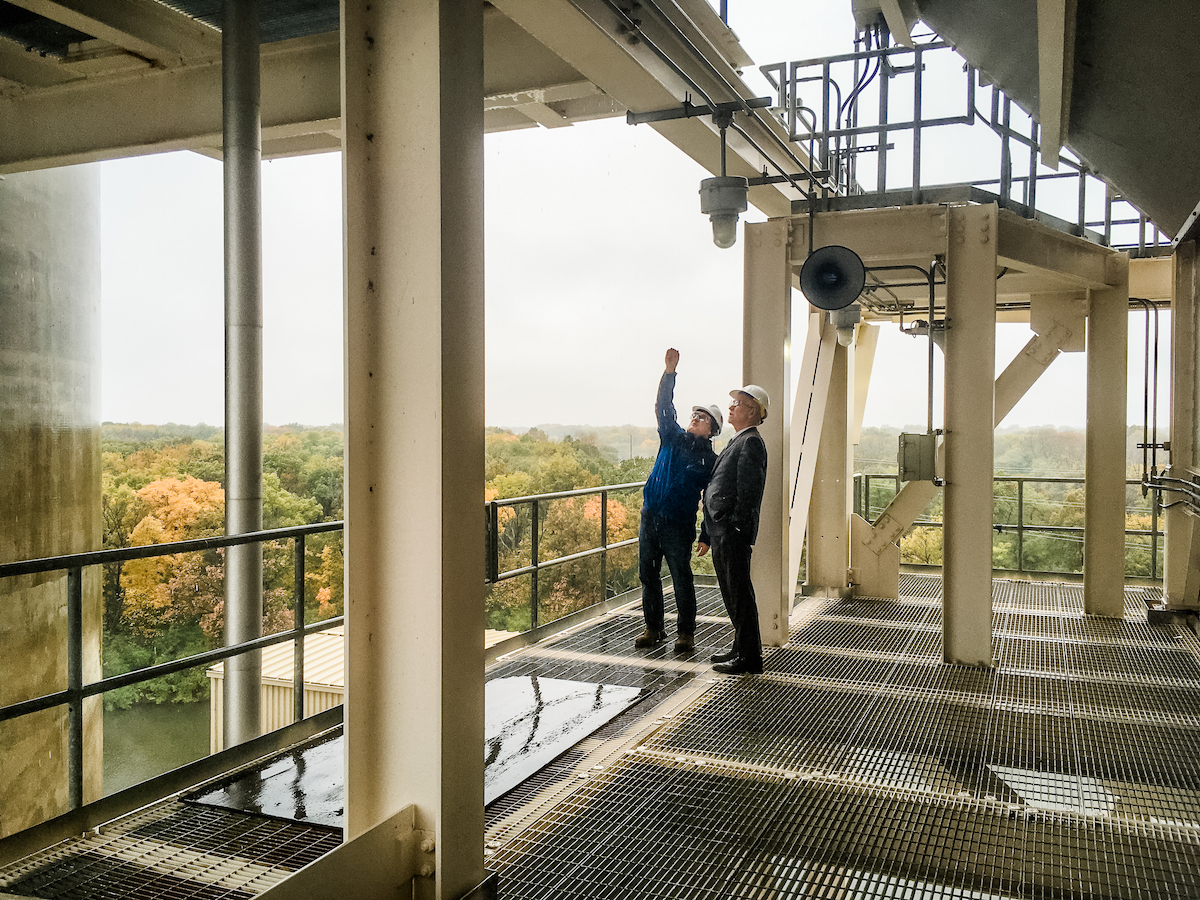
By Tiffany Jolley
The Prairie Research Institute is leading a drive toward a clean-energy future. This is the first installment of our ongoing series surrounding PRI’s state-of-the-art clean energy research. Part one introduces projects happening across PRI that implement innovative CO2 reduction strategies, an essential step toward reducing carbon emissions and greenhouse gases at an industrial scale.
PRI is collaborating with three Illinois power plants (Prairie State Generating Company, City Water Light, and Power, and the University of Illinois’ Abbott Power Plant) to implement sophisticated technologies that remove carbon from air emissions (carbon capture).
Three PRI surveys, the Illinois Sustainable Technology Center (ISTC), Illinois State Geological Survey (ISGS), and Illinois State Water Survey (ISWS), along with partners Kiewit Engineering Group, Mitsubishi Heavy Industries America, and Sargent & Lundy, are working to complete a front-end engineering design (FEED) study for the retrofit of the Prairie State Generating Company in Marissa, Illinois.
The goal is to design a system to capture more than 90 percent of carbon emissions at the facility and incorporate additional carbon offset strategies to achieve net-zero CO2 emissions. The FEED study is made possible through a $15 million grant from the U.S. Department of Energy’s (DOE) Office of Fossil Energy that is administered by the National Energy Technology Laboratory and $3.75 million from Prairie State Generating Company.
ISTC also is overseeing a large pilot test of the performance, safety, and environmental compliance of a carbon capture technology developed by Linde Gas North America and BASF at City Water, Light, and Power in Springfield, Illinois.
The aim of this project is to design, construct, and operate a 10 megawatt (MWe) carbon capture system at one of CWLP’s coal-fired generators. The project team has successfully completed the planning and evaluation of this technology at the plant. The design phase that is now in progress will produce a shovel-ready plan for construction.
The effort has the potential to be the foundation for more easily accessible and attainable carbon capture systems at other facilities around the world, depending on the outcome of a $45 million DOE grant with a $20 million match from the state of Illinois. The DOE received nearly 30 proposals from power plants across the country for the grant, which is now narrowed down to five final candidates – CWLP being one.
If selected, ISTC would embark on the construction of a CO2 separation unit at CWLP’s 200 megawatt Dallman Unit 4 using state-of-the-art air emission control technology as early as May 2021.
Abbott Power Plant currently hosts two DOE-funded carbon-capture research projects. In the first, ISTC is working with Linde to test three technologies for reducing aerosol particle concentrations in flue gas. This work is intended to help make solvent-based carbon capture technology more economical at commercial scales.
The second project, led by ISGS in a joint effort with ISTC and Trimeric Corporation, is working to advance the early development of a CO2 absorption technology at 40 kilowatt (kWe) following successful proof-of-concept and lab-scale development research.
This technology uses a novel biphasic CO2 absorption process that involves applying a proprietary solvent developed by ISGS researchers for post-combustion CO2 capture, an approach that could dramatically improve energy efficiency, lower the equipment cost and footprint, and maintain operational simplicity.
This post originally appeared on the Prairie Research Institute blog.

